Cook your Catch – Spring Squid (Crispy Calamari)
Posted by admin on
Spring is here and so are the spring squid all along the Emerald Coast of the Gulf of Mexico. As the water temperatures start to warm up as the winter passes the squid start showing up around the piers and marinas at night. These spring squids make great bait and eating as calamari. They show up first before all the baitfish and are a sign for warmer days ahead. Starting up around February you can catch these interesting creatures at night using squid jigs, all the way to the end of April.
Cook your Catch on AllOutdoor
- Cook your Catch – Triggerfish Face Nuggets (Tastes like Chicken! Maybe)
- Cook your Catch: Fried Shrimp and Shrimp Spiders
- Cook your Catch: King Mackerel Fish Dip – A Great Party Appetizer!
- Cook your Catch: Brown Butter Skate Wing with Parsnips
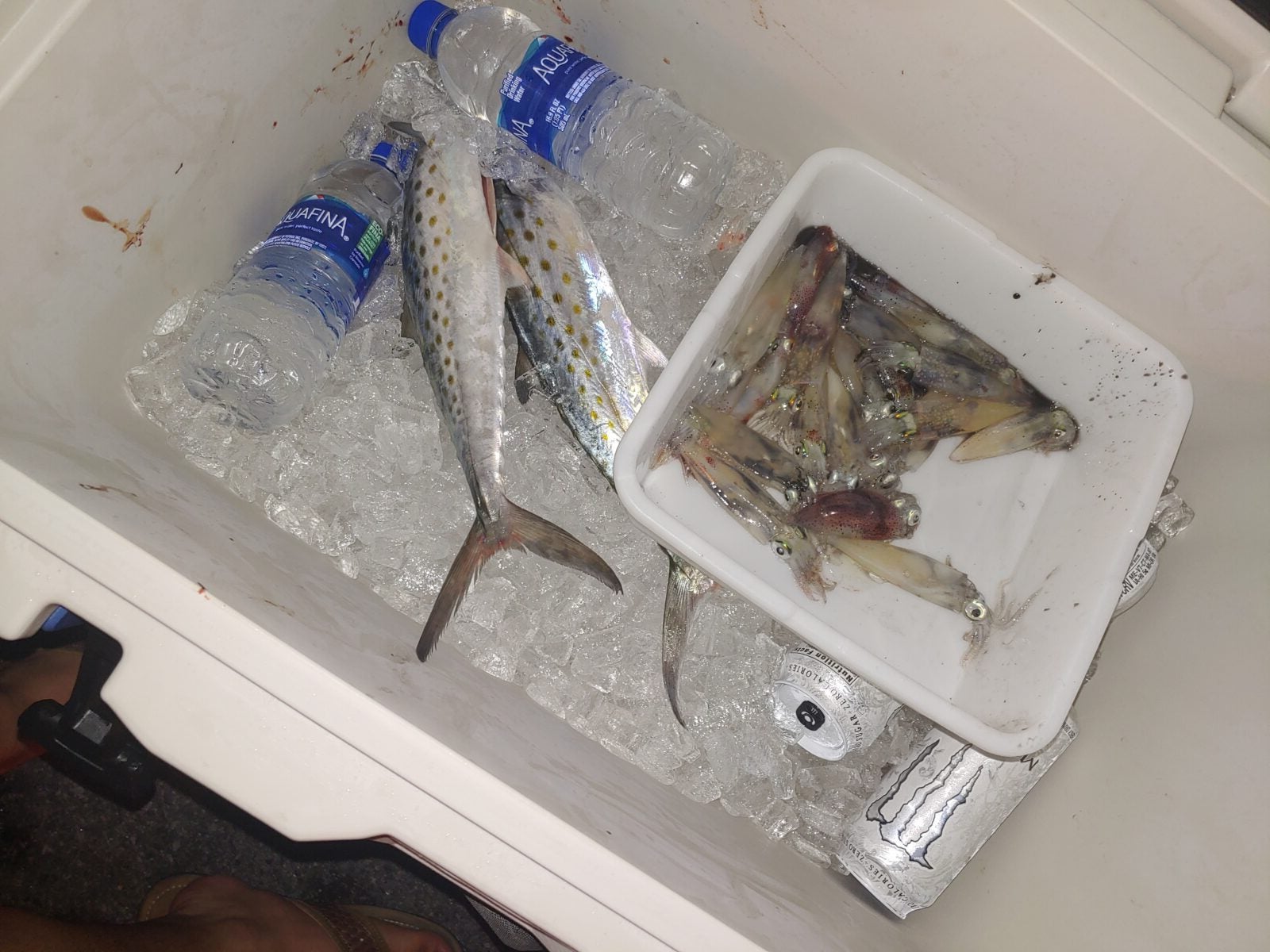
Unlike a normal jig with a lead head with a single hook, a squid jig is generally some colorful or glow beads that are strung on a stainless steel wire, tipped with a many-pointed squid hook that snags the squid when they attack the jig.
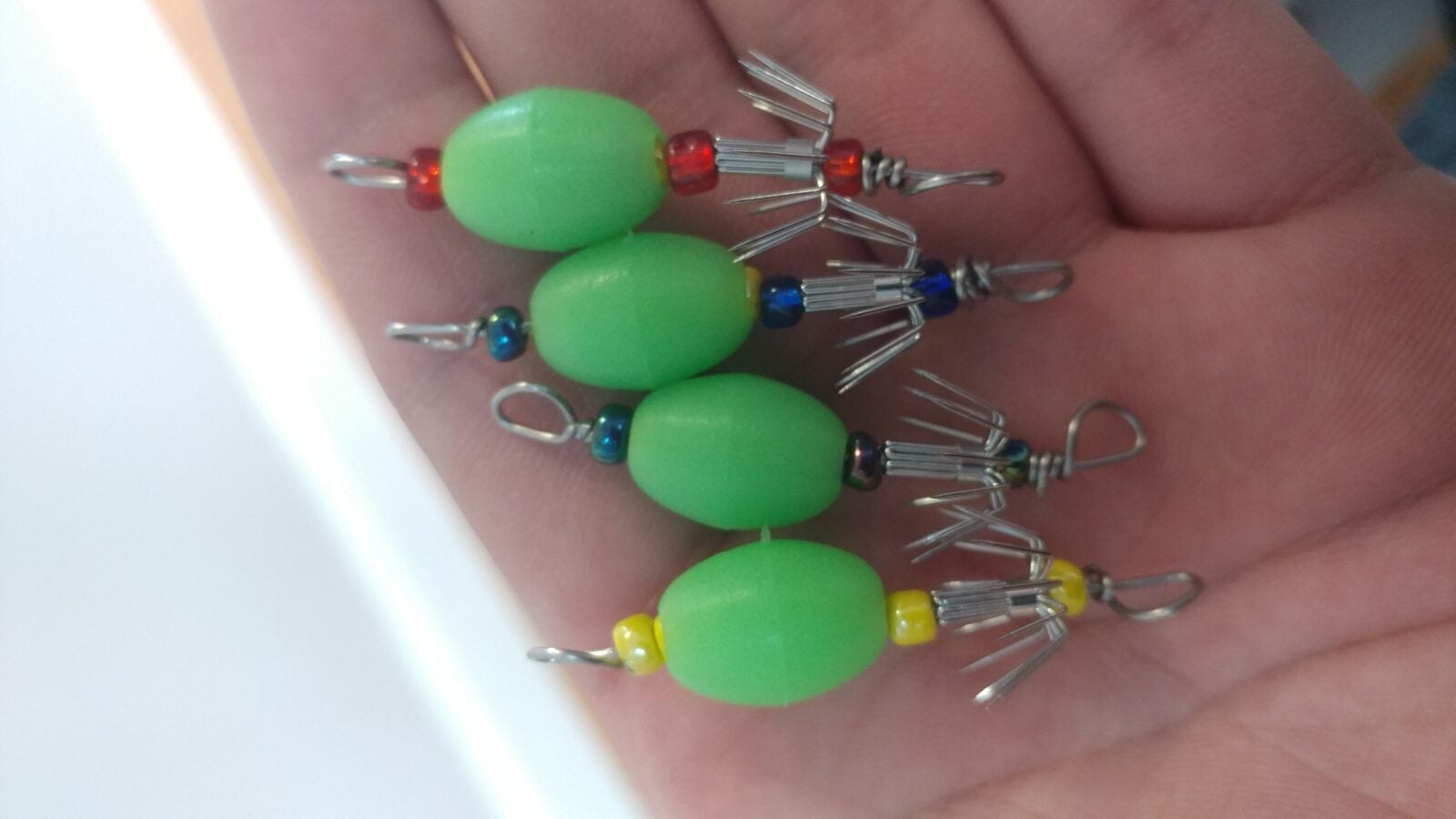
To fish for the squids we usually make a chicken rig with two or three loops to that we attach the jigs. Then at the bottom of the rig we put a weight, usually 1 ounce or lighter depending on the surf conditions. You want to use a lighter spinning rod, the squids don’t really fight and you want a lighter rod so you can easily notice the weight change when a squid is on the jig. The fishing starts at sundown and goes on until everyone’s tired usually. Often you’ll see the old timers bring out electric LED lanterns that they set pointing into the water to attract the squid. When the bite is good expect to fill gallon bags with fresh squid, they make excellent bait the next day for the small ones. Or you can clean them up like I’m about to show you and cook them up for a tasty meal.
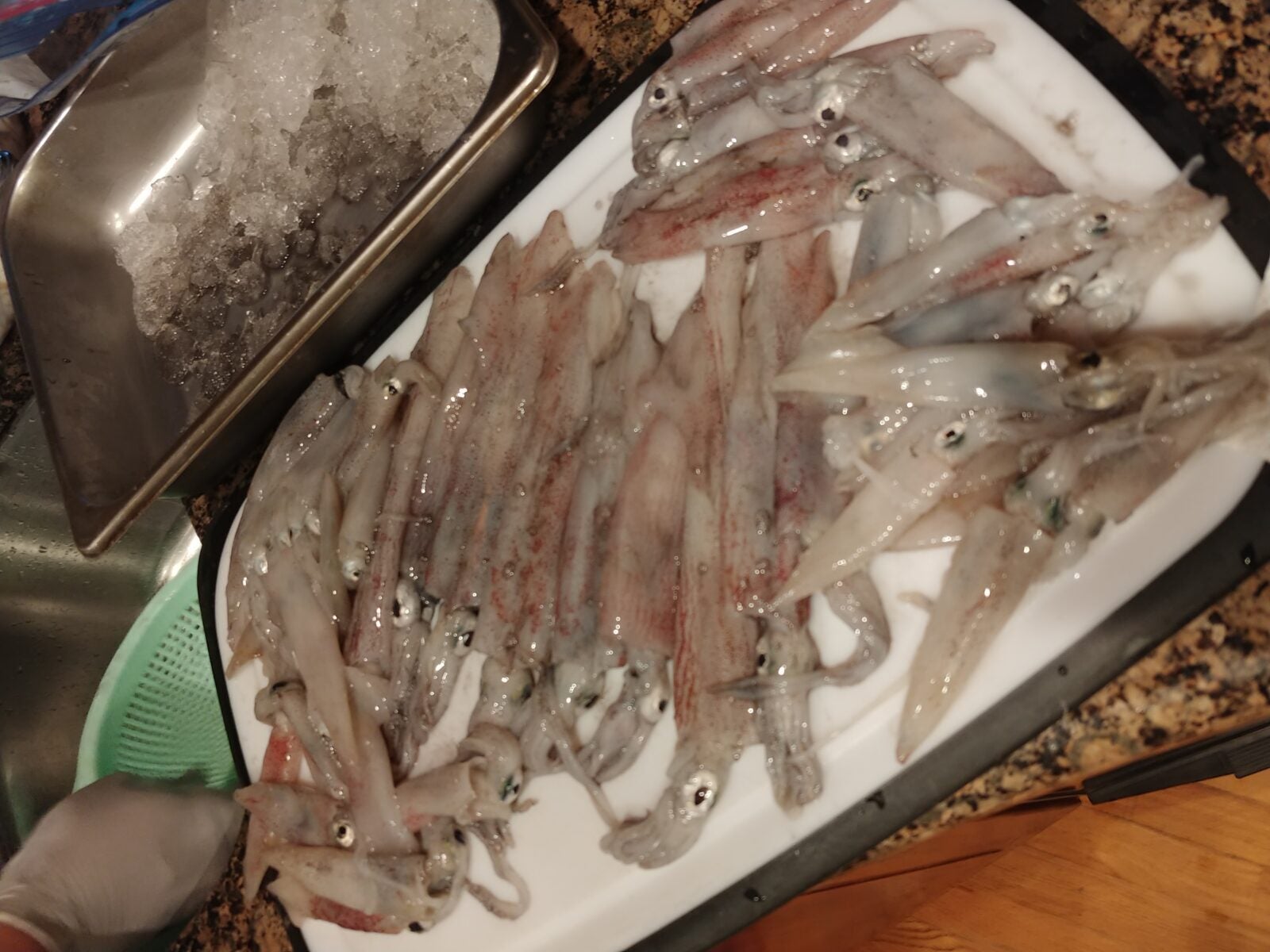
A squid has two main body parts, the tube/mantle, and the head. To start cleaning them you want to take the head off from the tube. If you feel and look carefully at the lip of the mantle you still see a small point along the lip.
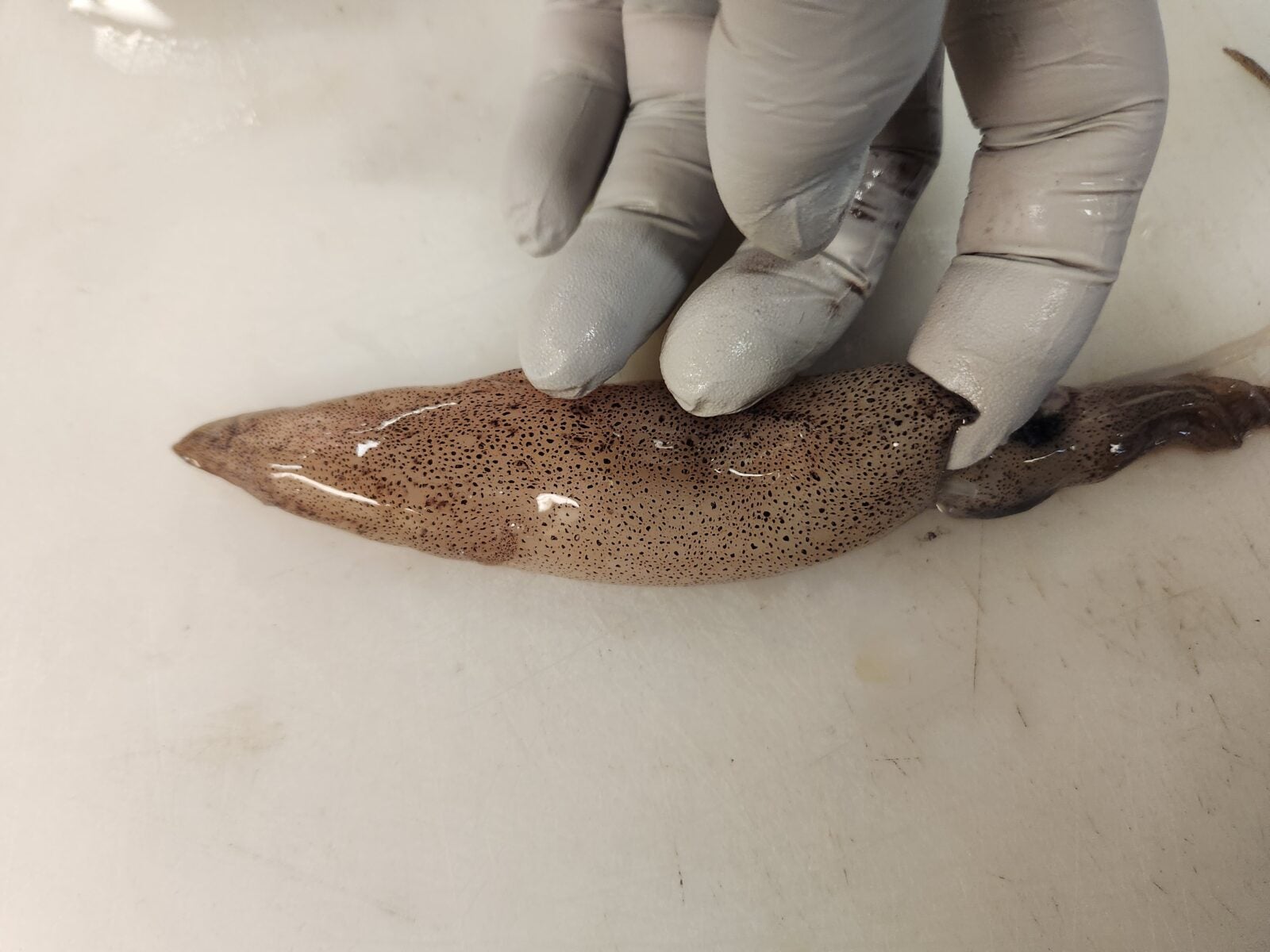
This is where the quill of the mantle is, the quill is a plastic-like feather that acts as the backbone of the squid. Once you find the quill you want to use your finger to lift it up and separate the guts and head from the tube/mantle. Once that’s done you can pull the head and most of the guts out of the tube.
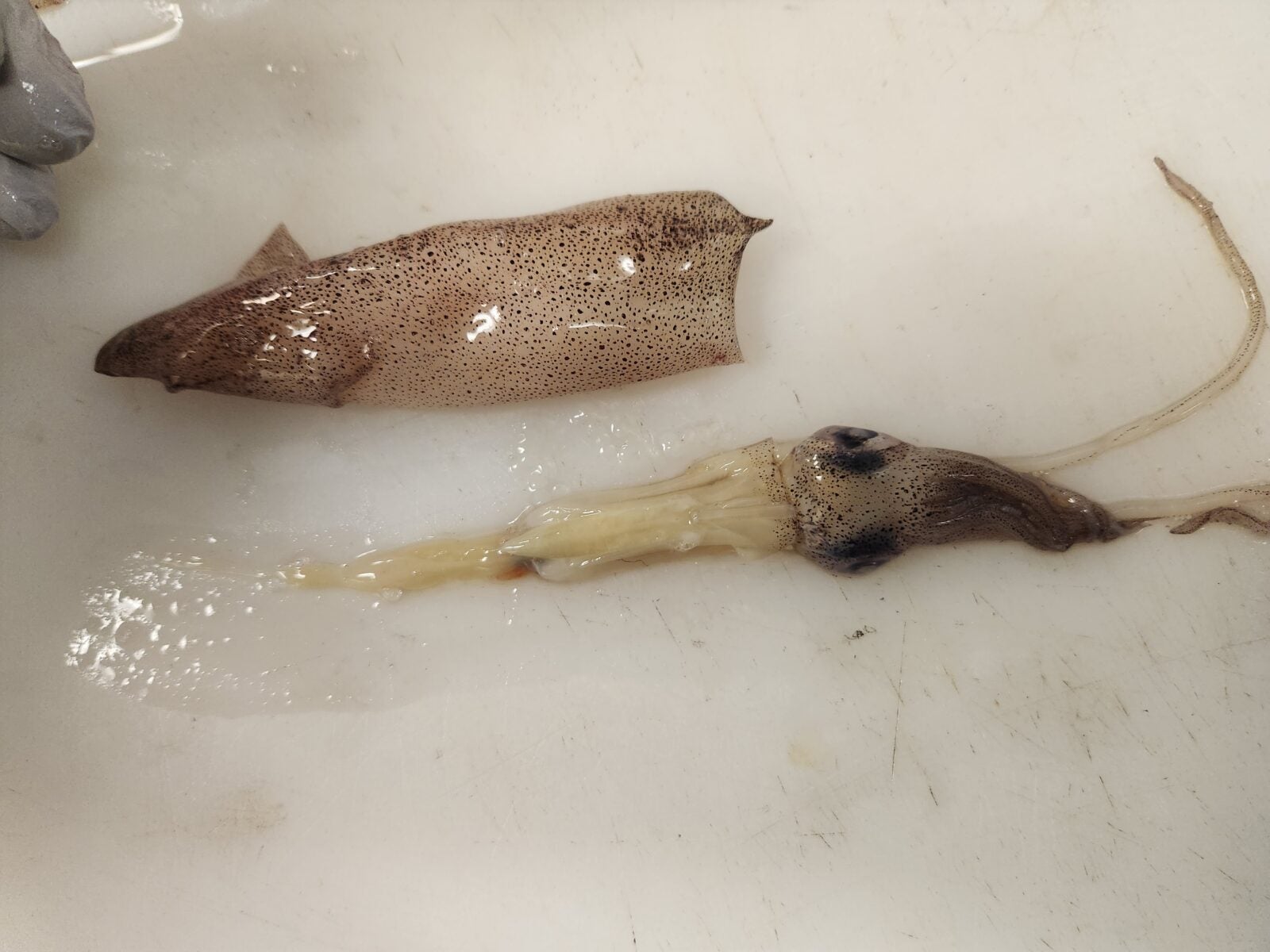
Do this for all the squid you’re cleaning, you want to work in batches to do the same step at once. Put the tubes/mantles aside on ice and now we’re going to finish cleaning the heads.
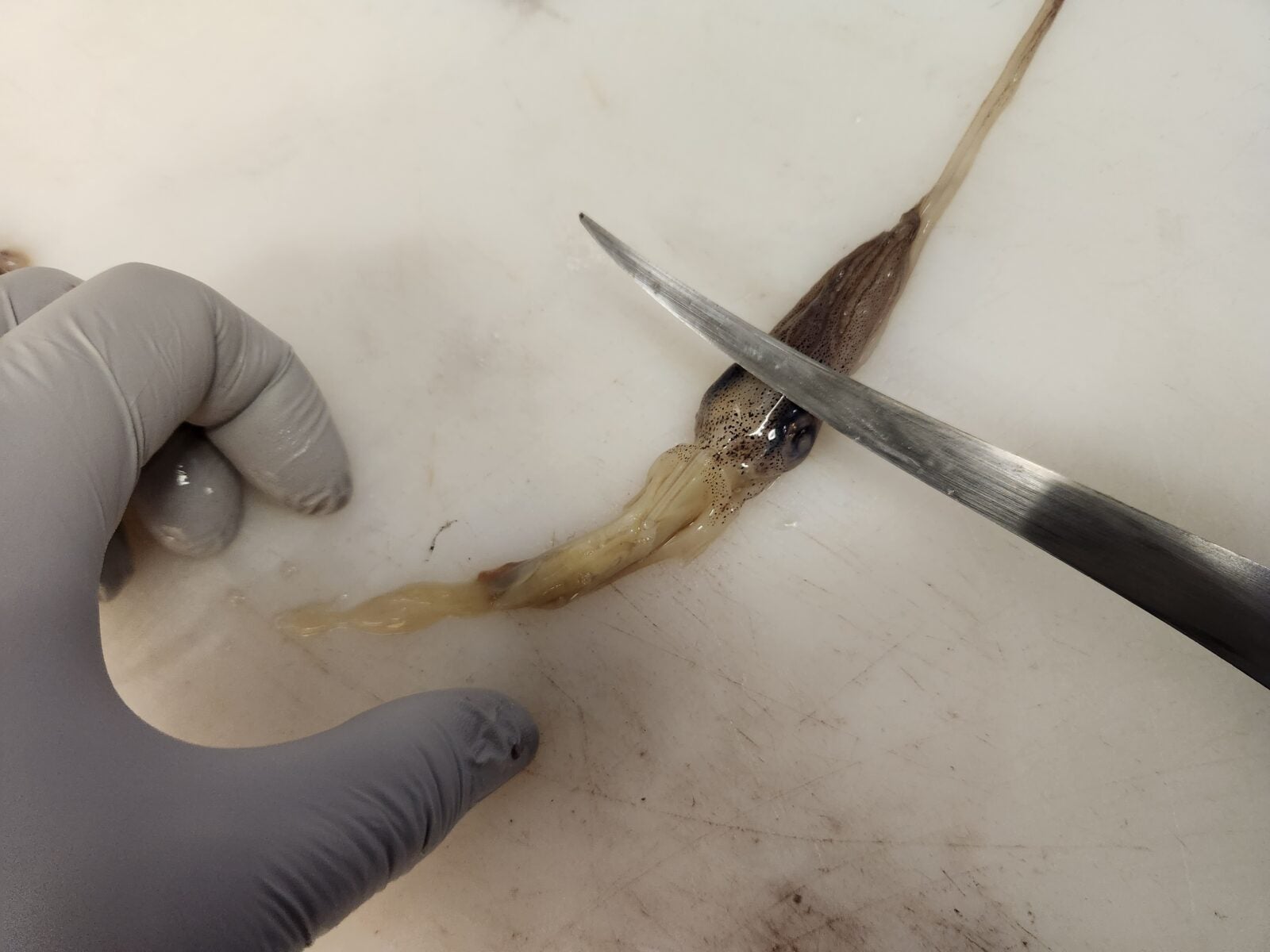
With a sharp knife, you want to cut right under the eyes of the squid head. This trims away all the guts and head in one quick move. Then with the remaining head and tentacles give it a slight squeeze to push the beak of the squid out from the center of the tentacles. Once you take the beak out give the tentacles a rinse and put them on ice, you’re done with them until it’s time to cook.
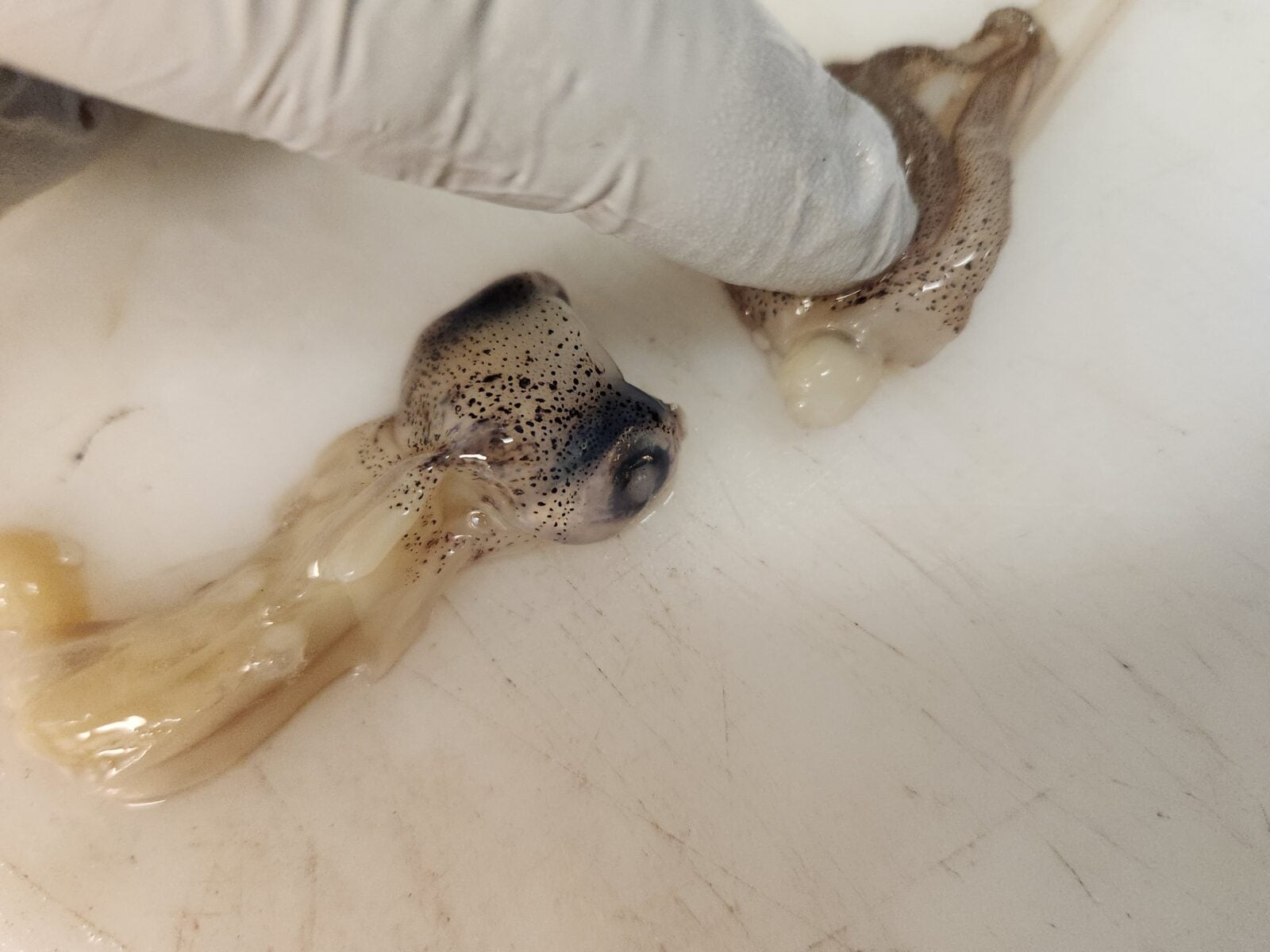
Now back to the tubes, first we want to “debone” the squid tubes. Using your fingers you can lift up the quill from the meat and then pull it straight out. Should be easy to do, just tedious when you have a few pounds of small squid.
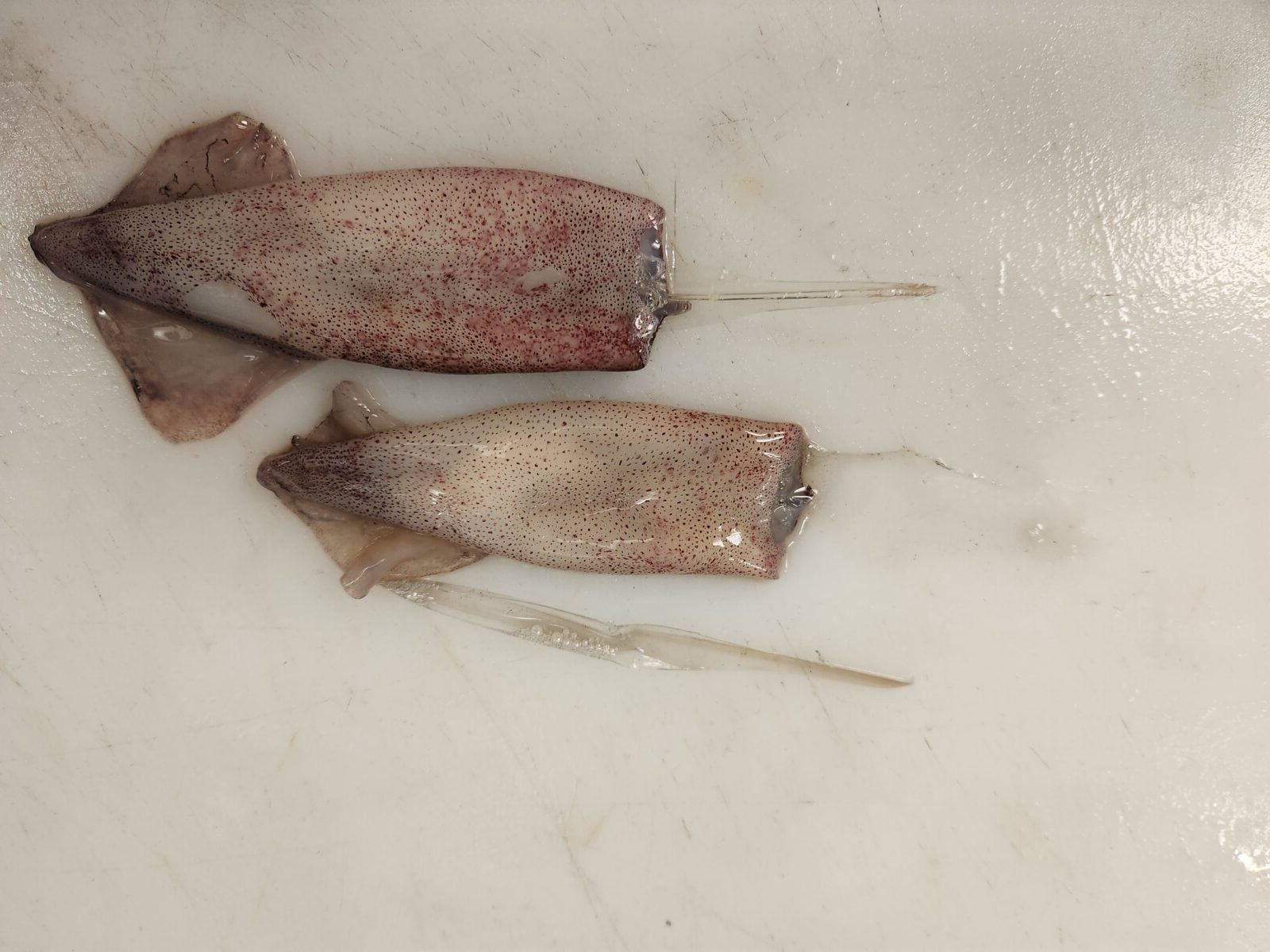
Once the quills are gone, you want to skin the tubes, there is a thin layer of loose skin on the mantle that turns red when cooked. This skin is what lets squid change their colors so much when alive, but often will stain whatever you’re cooking the squid in a bit pink. You don’t have to skin the tubes but if you want those picture-perfect tubes you want to skin them. This again is easy to do, just tedious. Just pinch the skin and peel the tubes, it’ll come right off.
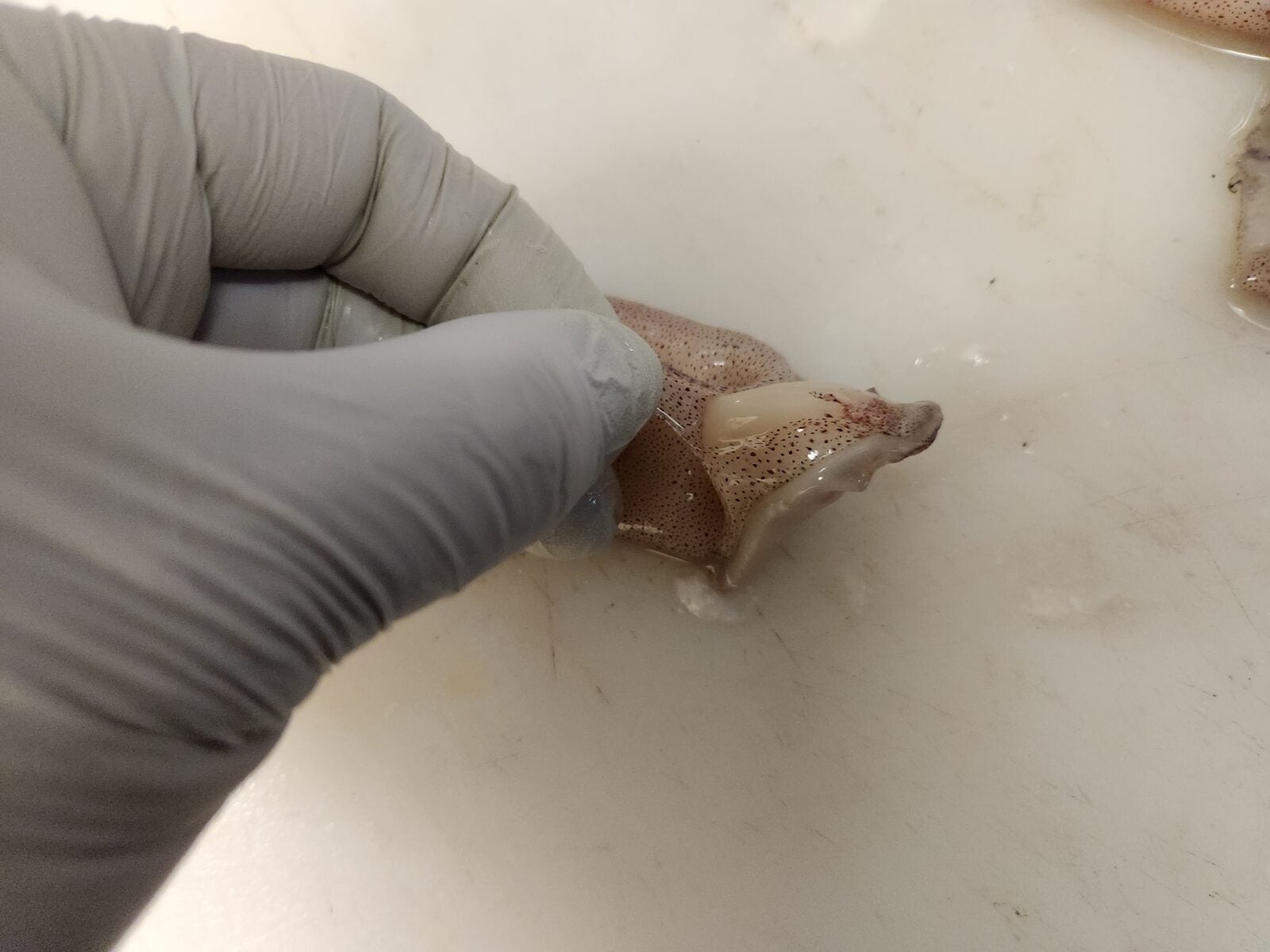
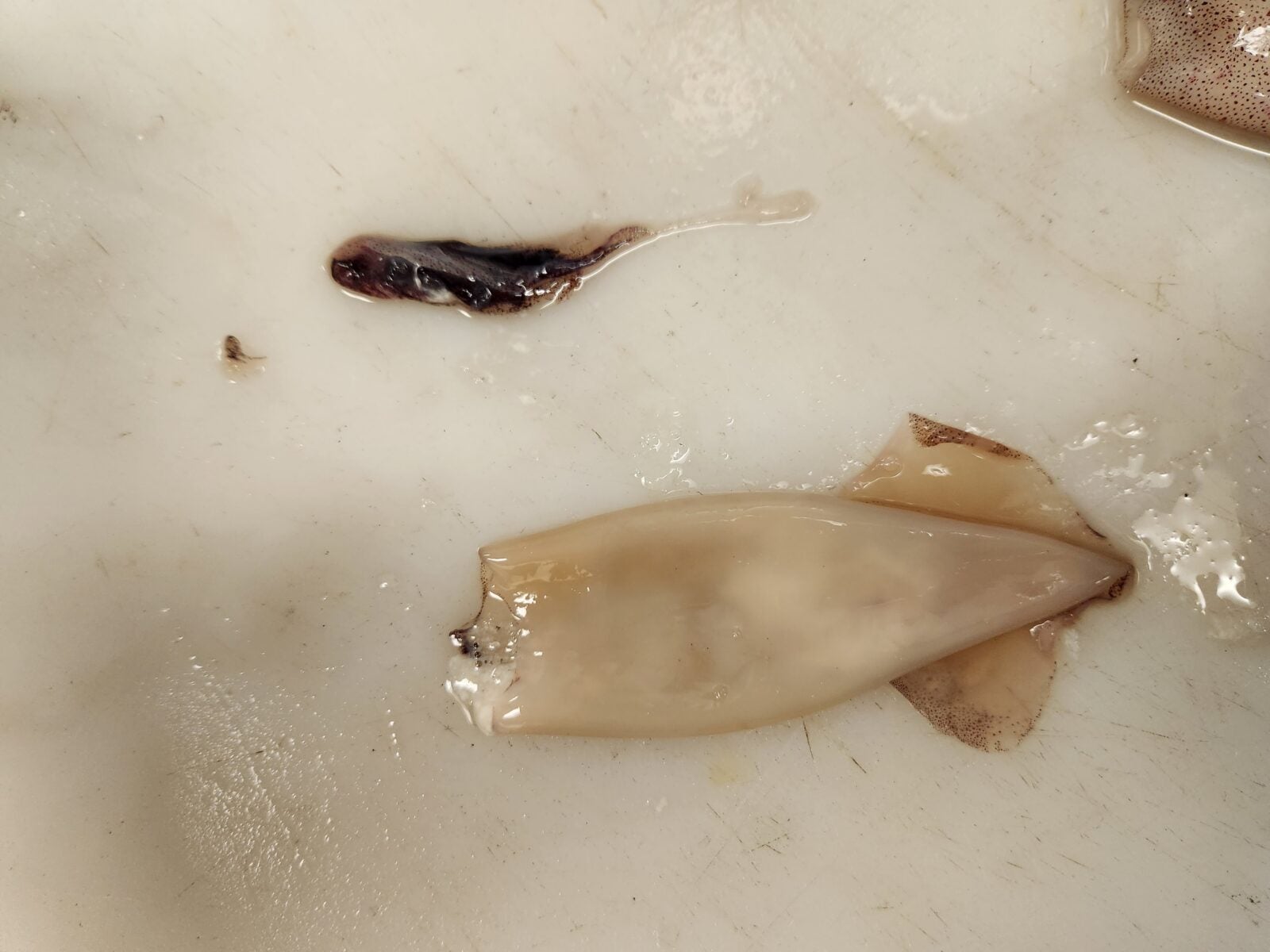
Now you got quilless skinned tubes, the last step for cleaning is to turn the tubes inside out and clean out the remaining guts. Just use your pinkie finger and push the tube inside out and then take off the remaining guts, then rinse in cold water.
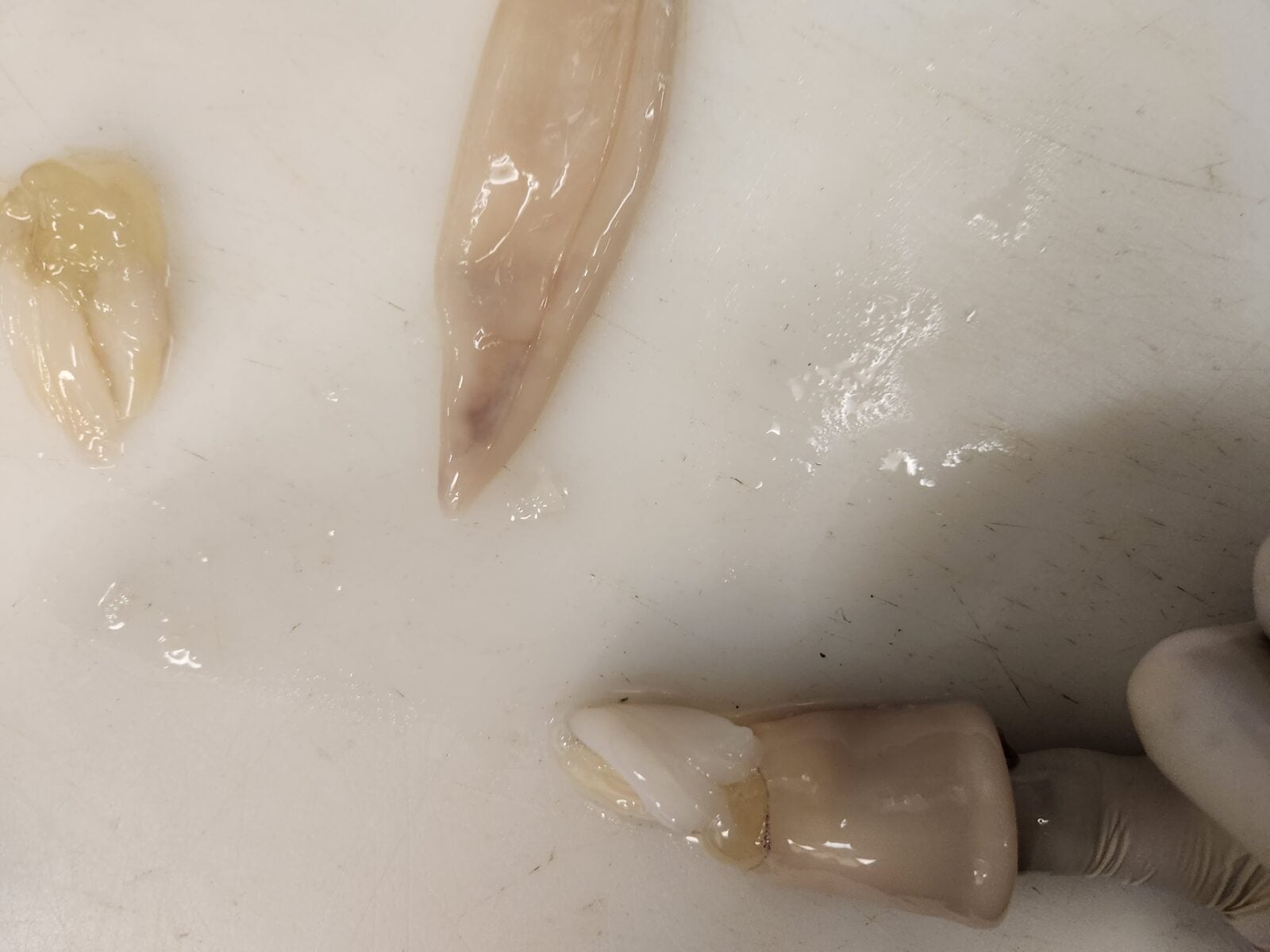
This is the last step of cleaning. You can then cook these however you want. Squid are very versatile in the kitchen. As whole calamari tubes, you can stuff them with seafood and then braise them in tomato sauce. Or you can slice them into rings and deep fry them for crispy calamari. Just know squids have to be cooked for a very short time or a very long time. Anywhere in between and it’ll be like eating a tire innertube.
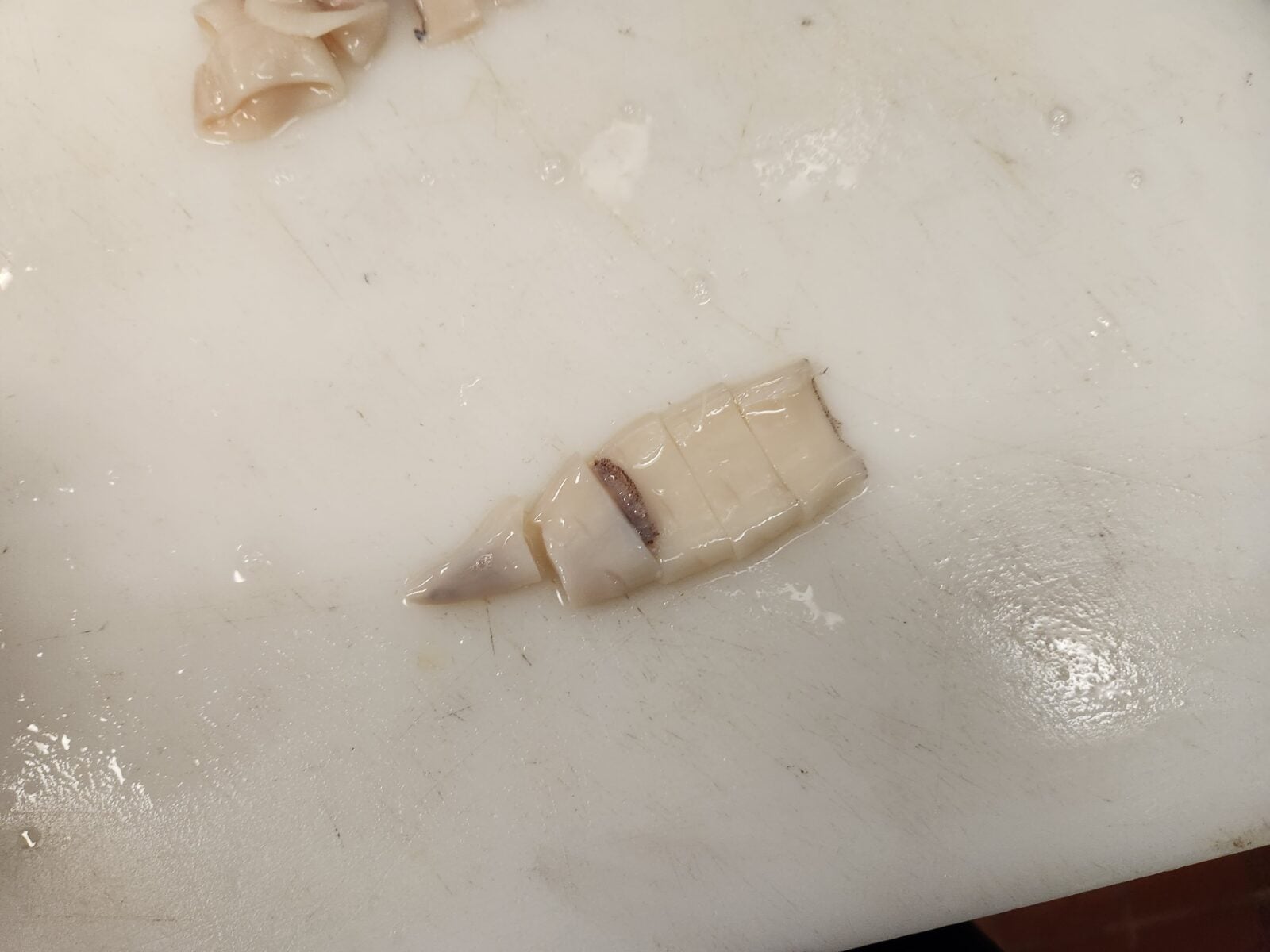
Here’s a quick and dirty way to fry up your cleaned spring squid.
Ingredients – Fried Calamari
- Cleaned Calamari
- Fish Fry Mix
- Ice Water
- Oil
This is a super easy way to fry your fresh-caught squid. Have all your cleaned squid soaking in the ice water. Get a bowl or tray and fill it with fish fry mix, or you can make your own using 1 part flour, 1 part corn flour, and seasoning to taste. Heat up the oil in a deep pan or pot to about 375F.
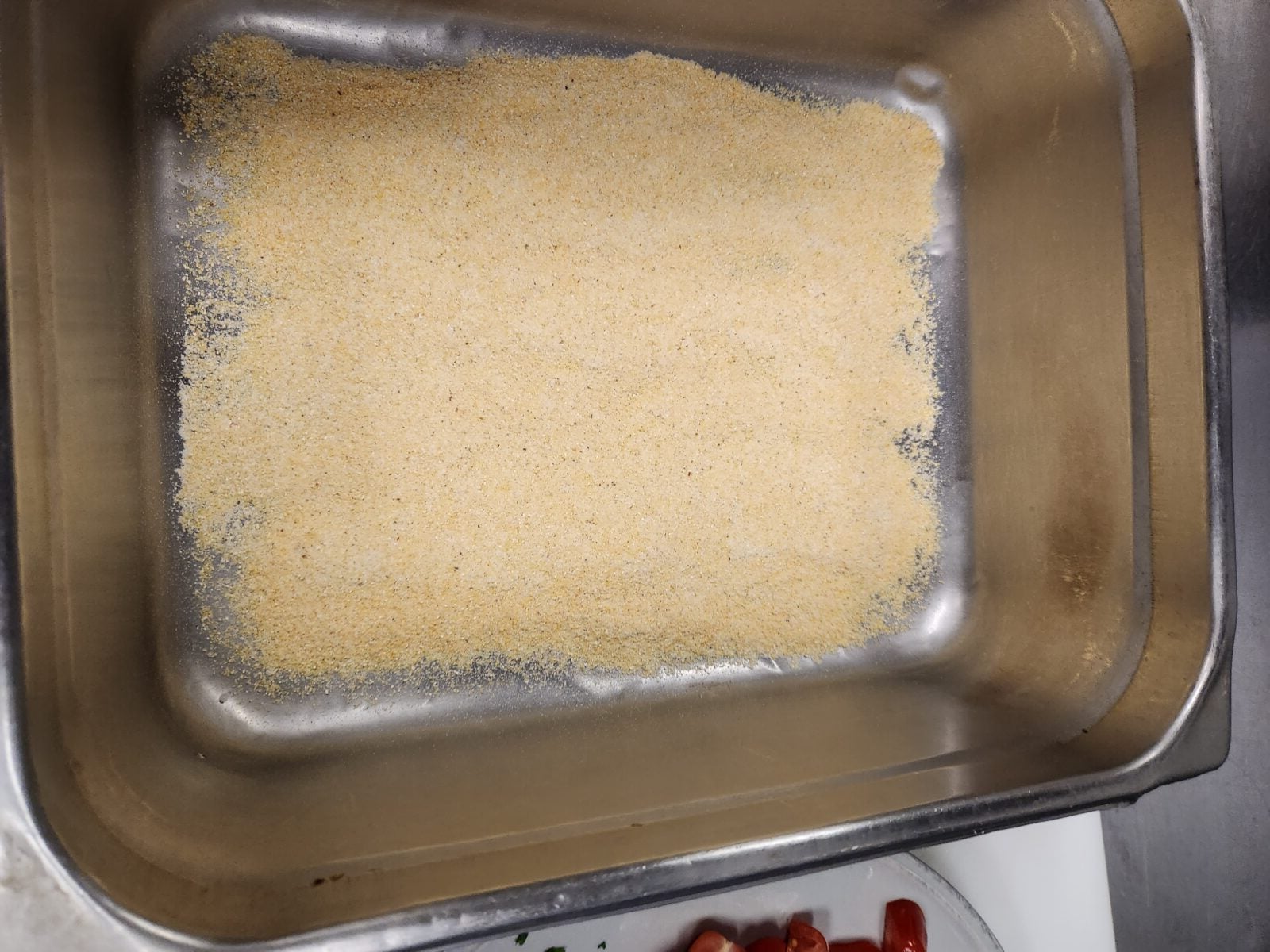
While the oil is heating up, drain the cut-up calamari well. Then add them all to the tray of fish fry mix. Even coat then let sit in the dredge so it builds up a thicker coating. Drop the pieces into the hot oil making sure not to overcrowd the pot, it will only take a minute or two to completely cook. You don’t want to overcook them. My buddy Kermit told me you can use a beer to time how long you should take to fry the squids. The time it takes to pick up your beer take a good swig and put it back down should be how long of a dip the calamari needs in the grease.
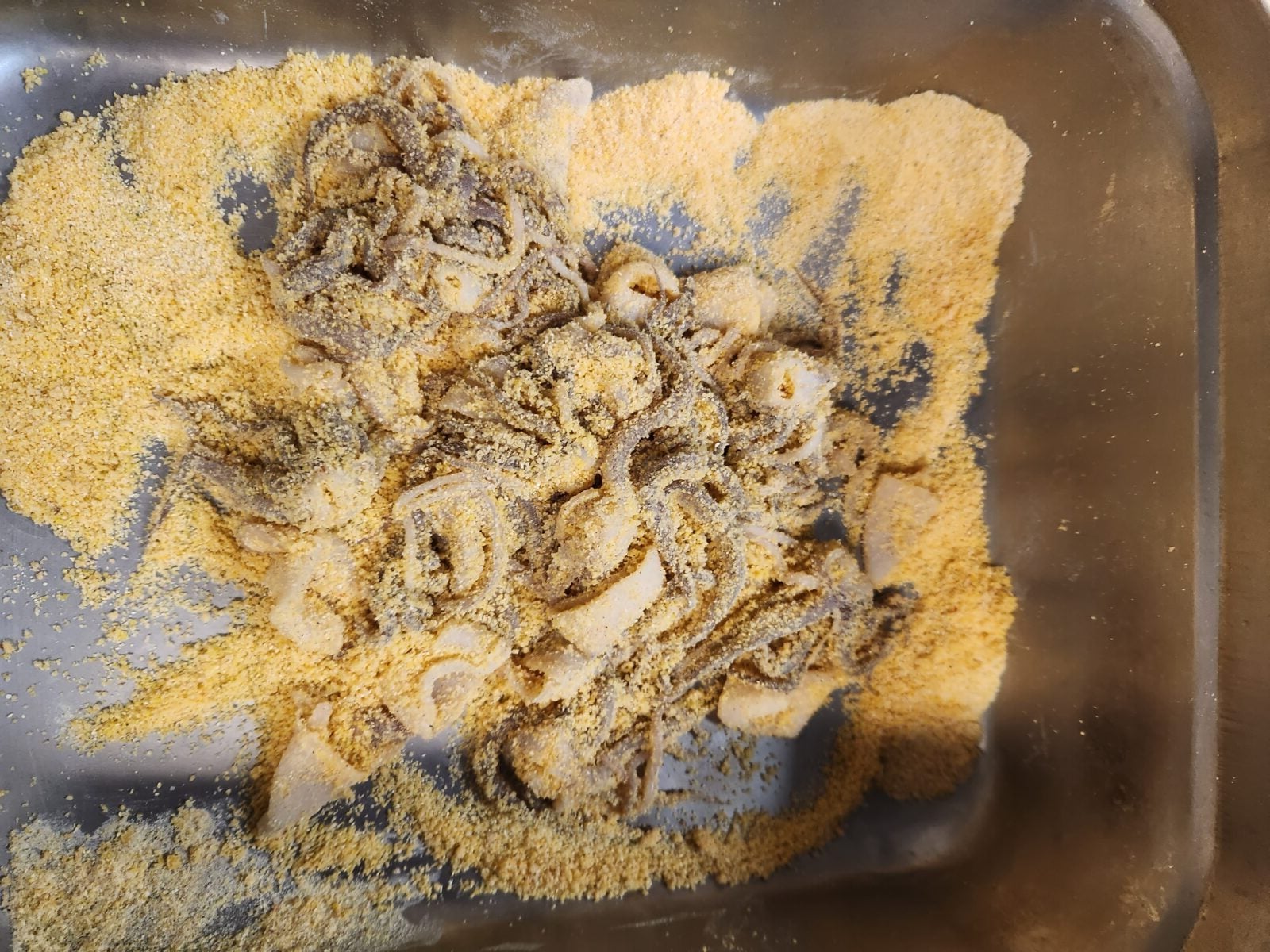
Once the pieces are done put them on a plate with paper put down, and serve with whatever sauce you want and some lemon wedges.
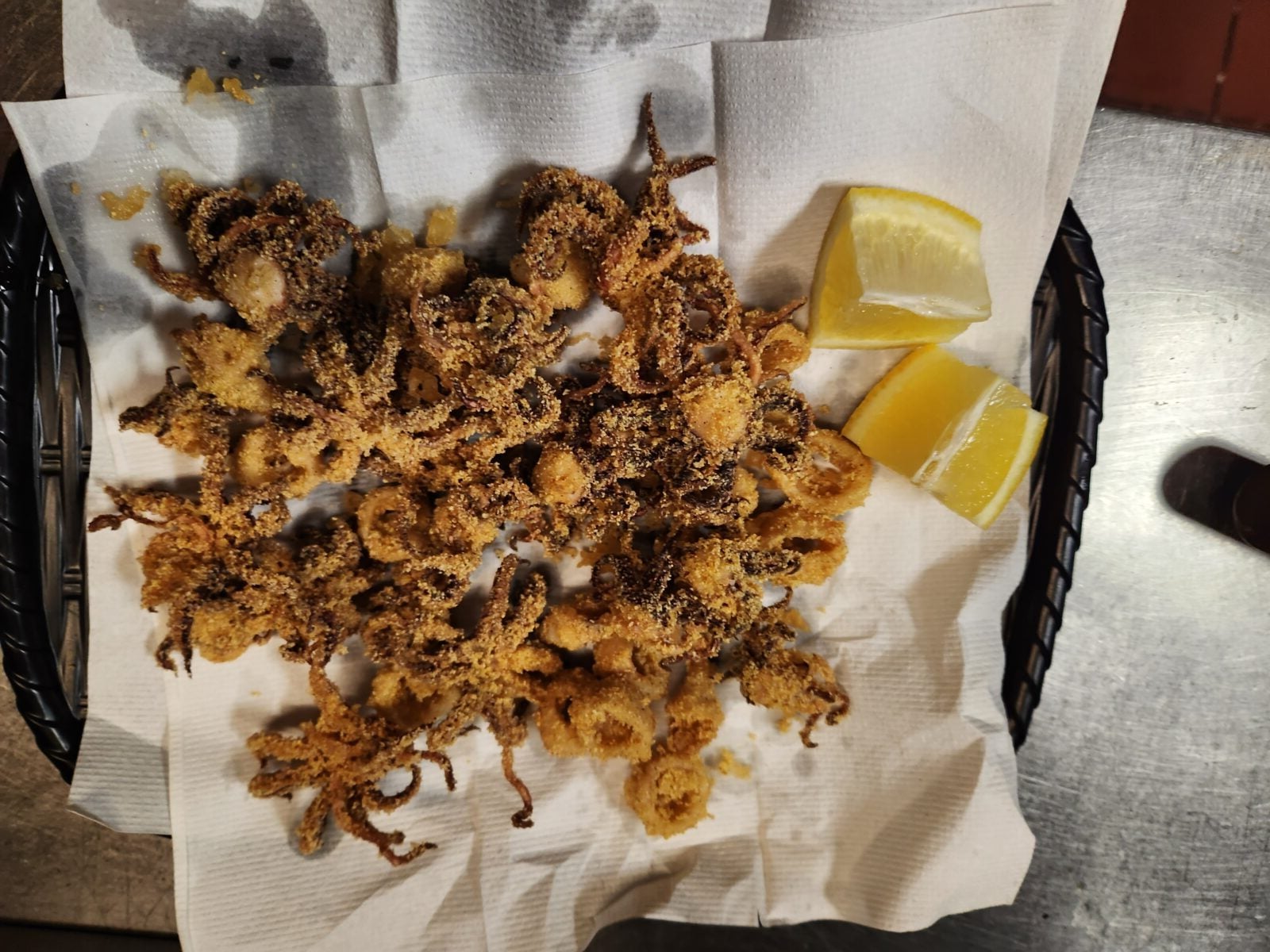
The post Cook your Catch – Spring Squid (Crispy Calamari) appeared first on AllOutdoor.com.
